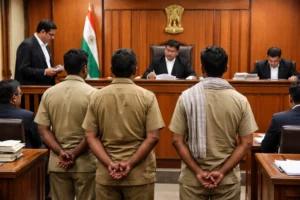In a crucial judgment, the Supreme Court has ruled that a government servant re-employed after retirement is not eligible for a second-time leave encashment if the maximum of 300 days' encashment has already been availed at the time of original retirement.
The case involved Dr. Mool Raj Kotwal, who had retired from the Sikkim government service on January 31, 2005, after reaching the age of superannuation. He was re-employed from February 1, 2005, to May 28, 2019. During his re-employment, he was again sanctioned leave encashment for 300 days. However, the State later cancelled this sanction through an Office Memorandum dated February 27, 2020, clarifying that the maximum limit of 300 days includes any leave earned during extension or re-employment.
"The government may sanction to a government servant who retires from service under the Sikkim Government Service Rules, 1974, cash equivalent of leave salary... subject to a maximum of 300 days." — Rule 36, Leave Rules
The High Court initially ruled in favor of Dr. Kotwal, interpreting that Rule 36, when read with Rule 32, could apply to re-employed employees. But the Supreme Court rejected this view, stating that Rule 36 applies only to those who retire under regular service conditions—not those who are re-employed post-retirement.
"Rule 32 cannot revive 300 days of unutilized leave afresh for re-employed employees who already availed the benefit." — Supreme Court Bench
The bench, comprising Justice J.K. Maheshwari and Justice Rajesh Bindal, emphasized that interpreting leave rules must also consider the financial stability of the public exchequer. The judgment highlighted that while leave encashment is based on the principle of deferred compensation and employee welfare, allowing the benefit multiple times could lead to unjust enrichment.
"Jurisprudentially, leave encashment is grounded in equity and economic security... but must not burden the public interest." — Supreme Court
Read Also:- Supreme Court: One High Court Judge Can't Overrule Another's Contempt Finding
The Court clarified that a re-employed government servant is treated as newly appointed for the purpose of leave accrual (Rule 32), but this does not extend to leave encashment, which is strictly limited under Rule 36 to 300 days at the point of retirement.
"Leave encashment must be interpreted strictly. It ensures dignity and fairness, but cannot be misused." — Justice Maheshwari
Ultimately, the Court allowed the appeal filed by the State of Sikkim, set aside the previous High Court orders, and upheld the cancellation of the second leave encashment granted during Dr. Kotwal’s re-employment.
Case Details : STATE OF SIKKIM AND OTHERS VERSUS DR. MOOL RAJ KOTWAL|SPECIAL LEAVE PETITION (C) NOS. 23709-23710 OF 2023















